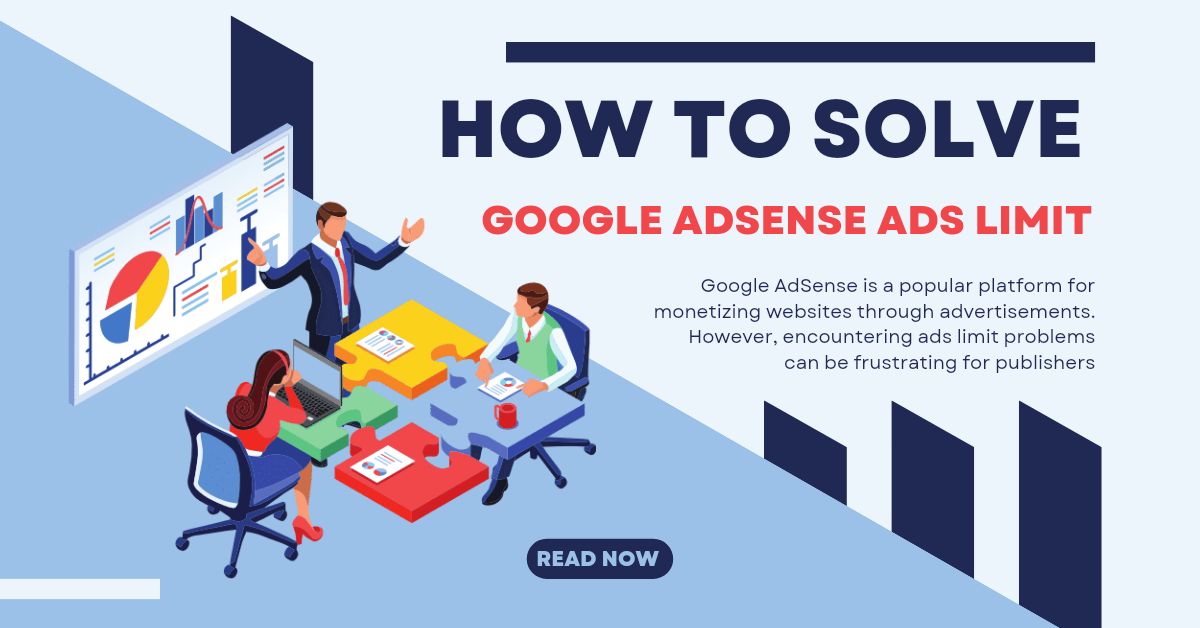
Google AdSense is a popular platform for monetizing websites through advertisements. However, encountering ads limit problems can be frustrating for publishers. In this blog, we will delve into the reasons behind Google AdSense ads limit issues and provide effective solutions to overcome them.
1. Understand Ads Limit Issue:
Before tackling the problem, it’s crucial to understand what the ads limit issue entails. Google AdSense may implement limits on the number of ads displayed on a website to maintain a positive user experience. These limits are in place to prevent overwhelming users with excessive ads.
2. Reasons for Ads Limit Issue:
Several factors can contribute to encountering ads limit problems:
a. Low-Quality Content: If your website’s content is of poor quality or lacks relevance, Google may limit the number of ads to prevent negatively affecting user experience.
b. Violation of Policies: Non-compliance with Google AdSense policies, such as engaging in click fraud or displaying prohibited content, can lead to ads limits.
c. Excessive Ad Density: Having too many ads on a single page can create a cluttered experience for users, prompting Google to limit ad display.
d. Slow Page Load Speed: Websites with slow loading times can deter users, and Google may limit ads to improve user satisfaction.
3. Solutions to Overcome Ads Limit Issue:
a. Improve Content Quality: Focus on creating high-quality, relevant, and engaging content that resonates with your target audience. This can enhance user experience and reduce the likelihood of ad limits.
b. Ad Placement and Density: Strategically place ads on your website without overcrowding. Follow Google’s ad placement guidelines to ensure a seamless integration of ads into your content.
c. Comply with Policies: Familiarize yourself with Google AdSense policies and adhere to them strictly. Avoid any activities that could violate these policies, such as generating artificial clicks.
d. Optimize Page Load Speed: Speed up your website’s loading time by optimizing images, minimizing code, and using caching techniques. A faster website improves user experience and can prevent ad limits.
e. Monitor Traffic Sources: Keep an eye on the sources of your website traffic. If you notice suspicious or low-quality traffic, take steps to mitigate it, as it can trigger ad limits.
f. Responsive Design: Ensure your website has a responsive design that works well on various devices and screen sizes. A mobile-friendly website contributes to a positive user experience.
4. Request a Review:
If you’ve addressed the issues that led to the ads limit problem, you can request a review from Google AdSense. This involves explaining the steps you’ve taken to rectify the problems and demonstrating your commitment to providing a high-quality user experience.
Conclusion:
Encountering ads limit issues on Google AdSense can be challenging, but with the right strategies, you can overcome them and create a better user experience on your website. By improving content quality, adhering to policies, optimizing ad placement, and enhancing page load speed, you can minimize the likelihood of ads limit problems and maximize your earning potential through Google AdSense. Remember, the key is to prioritize user experience while monetizing your content effectively.